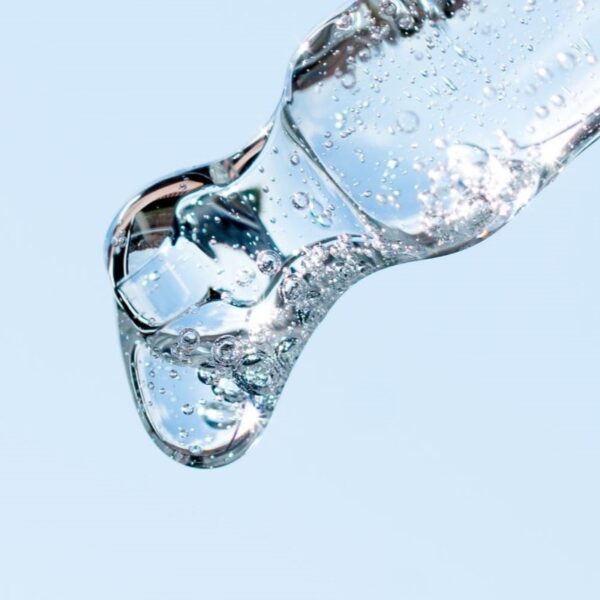Linoleic acid (LA) is an essential fatty acid that plays a significant role in maintaining human health. LA cannot be synthesized in the human body, must be obtained through dietary sources, and is a vital structural component for membrane fluidity. It serves as a precursor for γ-linolenic acid, arachidonic acid and eicosanoids.
This article focuses on linoleic acid’s functions, properties, and applications. It will also highlight the regulatory information and health benefits of linoleic acid.
What is Linoleic Acid?
Linoleic acid is the most highly consumed polyunsaturated fatty acid (PUFA) in the human diet. It is an essential (indispensable) nutrient since this fatty acid cannot be synthesized in the human body, it must be consumed. Linoleic acid (18:2ω6; cis, cis-9,12-octadecadienoic acid) contains two double bonds at the 9th and 12th carbons from the carbonyl functional group. Humans cannot incorporate a double bond beyond the ninth carbon of a fatty acid. Linoleic acid can be separated from vegetable oils or other sources by combining pretreatment, fractionation, and purification techniques.

Linoleic acid chemical structure. Source: Wikipedia
How is Linoleic Acid Sourced?
Linoleic acid is the most abundant (PUFA) in foods. It is the major PUFA in vegetables, fruits, and grains. It accounts for 40-50% of the total PUFAs in beans, 75-85% in beef and chicken meats, exceeds 80% in eggs, and the highest, i.e., 88% in soybean oil. Currently, soybean oil accounts for ∼45% of dietary linoleic acid in the US diet.
The table below gives a summary of the concentration of linoleic acid in several sources.
| Source | LA (g/100 g) |
| Safflower Oil | 73 |
| Corn oil | 57 |
| Hempseed Oil | 56 |
| Cottonseed oil | 50 |
| Soybean oil | 50 |
| Sesame oil | 40 |
| Black walnuts | 37 |
| English walnuts | 35 |
| Sunflower seeds | 30 |
| Brazil nuts | 25 |
| Margarine | 22 |
| Pumpkin and squash seeds | 20 |
| Spanish peanuts | 16 |
| Peanut butter | 15 |
| Almonds | 10 |
Source: ResearchGate
Use of Linoleic Acid in Food and Nutraceuticals
LA is found in various plant-based oils, including soybean, corn, sunflower, and safflower. These oils can be used to fortify food products, such as bread, pasta, and cereal, to enhance their nutritional value. Functional foods containing LA-enriched ingredients are developed to target specific health concerns, such as cardiovascular or skin health.
Given the importance of LA for maintaining optimal health, it can be consumed through dietary supplements as well. These supplements are available in various forms, including capsules, soft gels, and liquid emulsions. They often contain a combination of LA and other PUFAs to provide a balanced intake of essential fatty acids.
The food and nutraceutical industries continue to explore novel delivery systems for the effective administration of LA. For instance, microencapsulation and nanotechnology-based approaches have gained popularity for protecting LA from oxidation and enhancing its bioavailability. Furthermore, these innovative delivery systems enable the incorporation of LA into various food matrices, such as beverages, snacks, and confectionery products, providing consumers with diverse options for LA consumption.
Applications in Food and Nutraceuticals
For humans, linoleic acid is an essential fatty acid. When consumed, it has a critical role either as linoleic acid itself or as its metabolites.
Linoleic Acid as an Energy Source
Here’s how linoleic acid acts as an energy source:
- Metabolism: Fats, including linoleic acid, are the most energy-dense macronutrient, providing 9 calories per gram. In comparison, carbohydrates and proteins provide 4 calories per gram. The high energy density of fats allows the body to obtain more energy from a smaller quantity of food.
- Biologic Activity: Linoleic acid and other fats can be stored in the body’s adipose tissue as triglycerides, the primary form of stored energy. These stored fats can be mobilized and utilized for energy production, such as during fasting or intense physical activity.
Linoleic acid is also used in food products for the following functions:
| Function | Applications |
| Fat (Fatty Acid) Source | Linoleic acid is an essential polyunsaturated fatty acid (PUFA), a significant fat source in various foods. As an omega-6 fatty acid, it is vital in maintaining human health and participating in critical physiological processes. |
| Carrier Agent | Linoleic acid can act as a carrier agent, particularly in absorbing and transporting fat-soluble vitamins and other lipophilic compounds. |
| Coating Agent | Linoleic acid can be a coating agent in various applications, particularly in the food and pharmaceutical industries. Its properties as a fatty acid allow it to form protective layers, enhance the sensory attributes of products, and improve the stability and shelf life of certain ingredients by acting as a moisture barrier. |
Product Examples
| Type | Examples |
| Specialized Nutrition | Linoleic acid is an essential nutrient typically provided in enteral, parenteral, and infant formulas, where the fat content can vary depending on the specific use. A high intake of unsaturated fatty acids is recommended in a few metabolic conditions. |
Properties of Linoleic Acid
| Molecular Weight | 280.447 g/mol |
| Melting Point | -5 °C |
| Boiling Point | 230 °C |
| Refractive Index | n 20/D 1.466 |
| Smoke Point | 200 °C |
| Storage Temperature | Room temperature |
| Solubility in Water | Insoluble |
| Physical Form | Liquid |
| Specific Gravity | 0.9 |
| Color | Colorless |
| pH | 4.69 – 5.10 |
| Claims (*Product Specific) | Natural*, Halal*, Kosher*, Non-GMO*, Organic*, Plat based |
Linoleic Acid Formulation Considerations
Related Chemical Moieties
Conjugated Linoleic Acid
Conjugated Linoleic Acid (CLA) is a collective term for a mixture of positional and geometric isomers of linoleic acid in which the two double bonds are conjugated (contiguous) unlike the double bonds. CLA supplements are widely used in the fitness industry for their suspected benefits in heart health and weight loss. There are around 28 different forms of CLA where the arrangement of double bonds makes each unique.
Alpha Linoleic Acid
Linoleic acid and alpha-linolenic acid are polyunsaturated fatty acids but are classified in different families. Linoleic acid is an omega-6 fatty acid, while alpha-linolenic acid is an omega-3 fatty acid. Both fatty acids are essential for proper health and must be obtained through diet or supplementation.
Metabolism & Bioavailability
Linoleic acid, when consumed, may be metabolized and used in one of the various ways in the human body.
- Used as a source of energy
- Esterified to form neutral and polar lipids such as phospholipids, triacylglycerols, and cholesterol esters.
- Serve as a structural component to maintain a certain level of membrane fluidity of the transdermal water barrier of the epidermis.
- Enzymatically oxidized to a variety of derivatives involved in cell signaling.
Linoleic acid can be elongated and desaturated to other bioactive ω6 PUFAs, such as γ-linolenic acid (18:3ω6) and arachidonic acid (20:4ω6). It is a substrate for synthesizing physiological regulators called eicosanoids, including prostaglandins, prostacyclin, thromboxanes, and leukotrienes. These hormones mediate many biochemical processes, like regulating blood pressure, lipid levels, immune function, blood clotting, inflammation, and reproduction.
Dosage
Recommended Daily Intake
No specific information is available on the amount of linoleic acid required to correct the symptoms of (ω6) PUFA deficiency. The Scientific Advisory Board of the American Heart Association recommends an intake of between 5 and 10% energy for adults to reduce the risk of coronary heart disease.
Essentiality
Linoleic acid deficiency results in retardation in growth and wound healing, dermatitis, reproductive problems, fatty liver, and polydipsia. The level of essentiality in infants could be as low as 0.5–2.0% of energy. Linoleic acid deprivation in fat-free intravenous feeding can result in scaly skin lesions, growth retardation, altered plasma fatty acid patterns, and thrombocytopenia.
The deficiency of linoleic acid is extremely rare as it is abundantly present in infant formulas, human breast milk, and almost all majorly consumed vegetable oils. Hence, supplementing the diet with linoleic acid would be rarely required. However, a metabolic disorder regarding deficiency of FADS2 requires an additional intake of unsaturated fatty acids in the diet.
Balance between Omega-3 & Omega-6 fatty acids.
While both fatty acids are needed for proper health, research suggests that it is essential to maintain a balance between omega-6 and omega-3 fatty acids. Too much linoleic acid and insufficient alpha-linolenic acid can lead to inflammation, which is linked to many health conditions. Consuming the right balance of omega-3 and omega-6 fatty acids at about a 1:1 to 2:1 ratio. There are different ratios suggested by scientists which can help in other bodily conditions & well-being.
Excessive Intake
The intake of linoleic acid has increased many folds in recent years. This increase can be attributed to many reasons, including developing cultivars that produce seeds with high LA content, particularly soy and corn, increased commercial availability of the derived oils, and dietary recommendations to improve LA content.
Today LA intake is about 6% of total dietary energy, compared to pre-1930s values, which ranged between 1 to 2% of total dietary energy. Although no upper limit has been set for linoleic acid because of a lack of a defined intake establishing adverse effects, more studies are required.
Dosage Form
Linoleic acid is a lipophilic compound. It can be consumed in multiple ways in different dosage forms.
| Category | Dosage/ Intake Form |
| Dietary Supplements (Oral) | Capsules, Suspensions, Powders (Coated) |
| Fortification Vehicles | Any lipophilic food product can be easily fortified with LA |
| Parenteral Nutrition | Parenteral formulas |
Safety & Regulatory Considerations
The US Food and Drug Administration (FDA) considers linoleic acid safe for food products. It is a component of many food products, including vegetable oils, margarine, and dairy products. FDA allows use in food without limitations other than current good manufacturing practice.
Health Effects of Linoleic Acid
Eating foods with linoleic acid can offer several health benefits, such as:
- Lowering heart disease risk: Consuming linoleic acid may help reduce the chances of heart problems by lowering blood pressure and cholesterol levels. It also helps improve blood flow by relaxing blood vessels.
- Supporting brain health: Linoleic acid can contribute to maintaining a healthy brain.
- Improving skin and hair: Linoleic acid is essential for keeping skin moisturized and elastic. When applied directly to the skin, it can also help improve certain skin conditions like acne, eczema, and psoriasis.
- Enhancing reproductive health: Including linoleic acid in your diet may improve reproductive health.
- Strengthening the immune system: Linoleic acid can help boost your body’s natural defenses.
- Maintaining bone strength: Consuming linoleic acid may help protect bone density.
- Reducing inflammation: Linoleic acid can be converted into other anti-inflammatory compounds. These compounds can help regulate inflammation and may play a role in managing chronic conditions like rheumatoid arthritis, asthma, and inflammatory bowel disease.
Sources: ResearchGate, NIH, Harvard University, Science Direct, Oregon State University , NIH, BMJ, Science Direct, St. Lukes Hospital
Adverse Effects & Drug Interactions
Consumption of ω-6 & ω-3 supplements has to be done under the doctor’s supervision, especially if the subject is under medication like blood-thinning medicines, cholesterol-lowering medicines, and anticoagulant drugs. PUFAs are suspected of augmenting the function of these drugs, which can lead to some adverse effects and bleeding.
Identification Numbers
| IUPAC Name | (9Z,12Z)-octadeca-9,12-dienoic acid |
| CAS Number | 60-33-3 |
| PubChem Number | 5280450 |
| European Community (EC) Number | 200-470-9 |
Fun Facts About Linoleic Acid
- Part of the Omega-6 family: Linoleic acid is an omega-6 fatty acid, which, along with omega-3 fatty acids, is crucial for maintaining optimal health. These fatty acids are essential because the human body cannot produce them independently and must obtain them through dietary sources.
- Discovered in the early 20th century: Linoleic acid was first identified in 1913 by the Polish chemist Władysław Białasik, who extracted it from linseed oil. It was later recognized as an essential fatty acid in the 1930s by George and Mildred Burr.
- Role in the body: Apart from its anti-inflammatory and cardiovascular benefits, linoleic acid is involved in forming cell membranes, nerve cells, and hormones. It also plays a crucial role in immune function and blood clotting.
Additional Sources & Resources
- NCBI – Linoleic acid and human health: a review
- MDPI – Linoleic Acid: A Nutritional Quandary
- NCBI – Linoleic acid and cancer risk: a review of scientific literature
- Dr. Axe – Linoleic Acid: Benefits, Deficiency and Food Sources
- Harvard T.H. Chan School of Public Health – Dietary Linoleic Acid and Risk of Coronary Heart Disease
- NCBI – Omega-6 Polyunsaturated Fatty Acids and Cardiovascular Health: A Review
- Tuscany Diet – Linoleic Acid: Benefits, Side Effects, Foods
- ScienceDirect – Linoleic Acid: Biochemistry and Physiology
- St. Luke’s Hospital – Linoleic Acid Test
- Linus Pauling Institute – Essential Fatty Acids
- NCBI – Linoleic acid and placental function
- FDA – Code of Federal Regulations – 21 CFR 184.1065 – Linoleic acid (and isomers)






